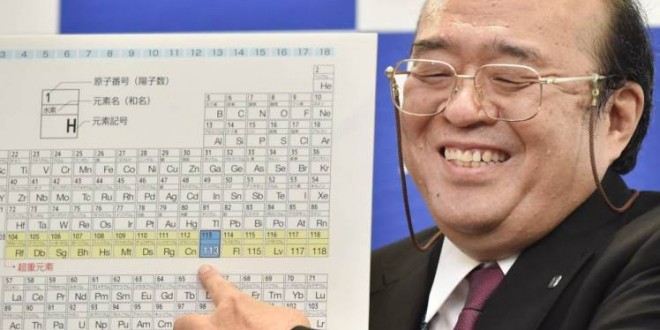Periodic table’s seventh row finally filled as four new elements are added.
The International Union of Pure and Applied Chemistry (IUPAC) verified the new elements last week, which were discovered by scientists in the U.S., Japan and Russia. “The chemistry community is eager to see its most cherished table finally being completed down to the seventh row,” Professor Jan Reedijk, president of the Inorganic Chemistry Division of IUPAC, said in a statement.
The man-made elements, which have not yet been officially named, are being temporarily called Element 113, Element 115, Element 117 and Element 118. They’re the first to be added to the table since 2011 and were discovered by slamming lighter nuclei into each other and tracking the following decay of the radioactive superheavy elements
Both the U.S.-Russian and Japanese research teams synthesized elements by slamming light nuclei into one another and observing the rate of radioactive decay of the superheavy elements they created, according to the source.
The U.S. and Russian team consisted of researchers from the Larwrence Livermore National Laboratory in California and the Joint Institute for Nuclear Research in Dubna, Russia, respectively, with the Japanese research on element 113 being conducted at RIKEN in Wako, Japan.
This development means that the periodic table’s seventh row will soon be officially full. And it’s incredibly unusual for four new elements to be confirmed and validated in such a short amount of time, as IUPACs executive director Lynn Soby tells Inverse.
Four new elements earned a permanent spot on the periodic table of elements! https://t.co/LGwdyVAXXI pic.twitter.com/vYeb7zjYEu
— Science Channel (@ScienceChannel) January 3, 2016
These elements don’t exist outside of laboratory environments—they’re classified as “super-heavy”, and they’re so radioactive and unstable that they only last for milliseconds until they turn into different elements, which is why it’s taken until now to classify them.
“It’s not like anybody and their brother could find one,” Soby says. “You need a supercollider and a lot of physicists involved.”
Agencies/Canadajournal

 Canada Journal – News of the World Articles and videos to bring you the biggest Canadian news stories from across the country every day
Canada Journal – News of the World Articles and videos to bring you the biggest Canadian news stories from across the country every day

